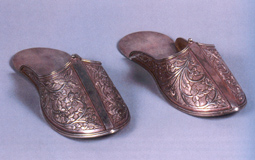
Advocacy, Art history/ Historiography, Crafts, Handlooms, Art, Policy
Cotton To Cloth: An Indian Epic
Uzramma
Issue 01,Summer 2019
| Issue 1, Summer 2019 ISSN: 2581 - 9410 The cotton handloom industry of India is one of the great manufacturing institutions of the world: its looms have run continuously for five thousand years. Remnants of cotton thread have been found in the ruins of the Harappan civilization [5000-3500 BC], and the weavers of India have supplied the markets of the world with cotton cloth since at least the first century of the Christian era. The golden age of Indian cotton in recorded history stretches from that time until the beginning of the nineteenth century and there are testaments to the quantity, quality and variety of Indian cotton fabrics scattered through written records. Indian textiles were traded for Roman gold at the time of the Roman Empire; Pliny, the Roman historian of the 1st century AD, calculates the value of imports of Indian fabrics to Rome at a hundred million sesterces [equal at the time to 15 million Indian rupees] every year, and complains that India is draining Rome of her gold. Suleiman, an Arab trader who visits Calicut in 851 A.D writes in his diary “..Garments are made in so extraordinary a manner, that nowhere else are the like to be seen. These garments are ......wove to that degree of fineness that they may be drawn through a ring of middling size”1. Tome Pires, a Portugese traveler of the 16th century writes in 1515 from Malacca describing the ships that come there from Gujarat a... |
This is a preview. To access all the essays on the Global InCH Journal a modest subscription cost is being levied to cover costs of hosting, editing, peer reviewing etc. To subscribe, Click Here.
ALSO SEE
The Cultural Diversity Umbrella
Jongeward, Carolyn
The Tradition of Foot Covering in Indian Cultur...
Pathak, Anamika



